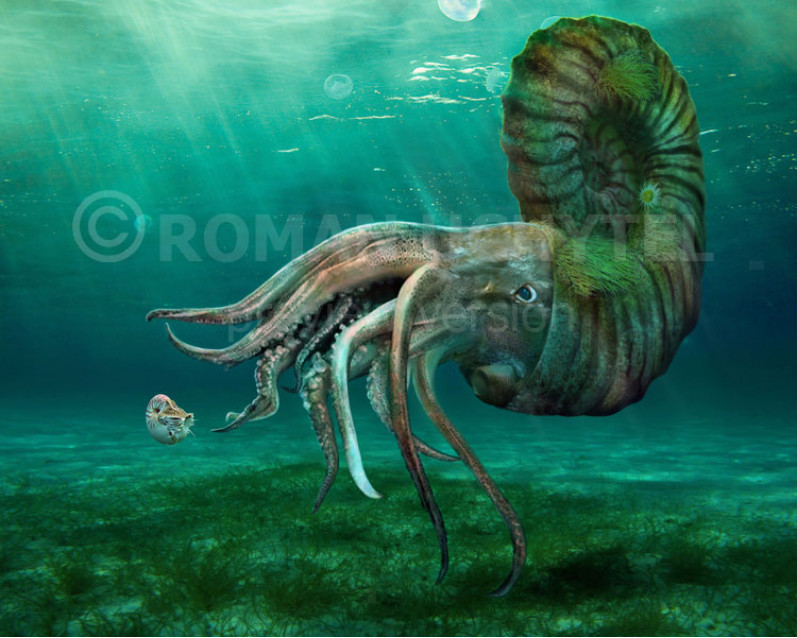Parapuzosia and chambered nautilus
2026520265At the end of the Cretaceous period, incredible ammonites lived in warm seas - giant cephalopod mollusks with spiral shells. Parapuzosia seppenradensis was the largest known representative of the ammonites. It is believed that the diameter of the shell of such a «snail» was 2 or even 3.5 meters, and its mass is estimated at 1455 kg.
Today, cephalopods are still widespread in seas and oceans, but almost all of them are devoid of an external shell. Only nautiluses (Nautilus pompilius) still resemble relics from the past. Compared to Parapuzosia, the nautilus appears very small, although its length can exceed 30 cm.
About the Size Comparison Project: In 2020, during the coronavirus pandemic, Roman and Alexandra Uchytel created the Size Comparison Project to compare ancient animals with their modern relatives, which went viral on social media. More details about the Size Comparison Project, as well as links to media publications you can find here
At the end of the Cretaceous period, incredible ammonites lived in warm seas - giant cephalopod mollusks with spiral shells. Parapuzosia seppenradensis was the largest known representative of the ammonites. It is believed that the diameter of the shell of such a «snail» was 2 or even 3.5 meters, and its mass is estimated at 1455 kg.
Today, cephalopods are still widespread in seas and oceans, but almost all of them are devoid of an external shell. Only nautiluses (Nautilus pompilius) still resemble relics from the past. Compared to Parapuzosia, the nautilus appears very small, although its length can exceed 30 cm.
About the Size Comparison Project: In 2020, during the coronavirus pandemic, Roman and Alexandra Uchytel created the Size Comparison Project to compare ancient animals with their modern relatives, which went viral on social media. More details about the Size Comparison Project, as well as links to media publications you can find here


